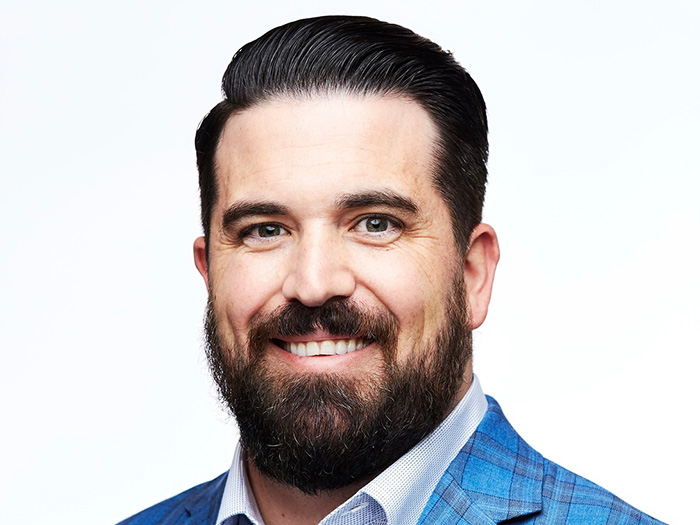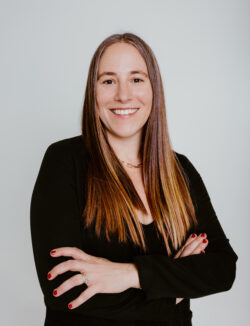Specialty Insurer CFC’s North American Summit: A Wrap-Up
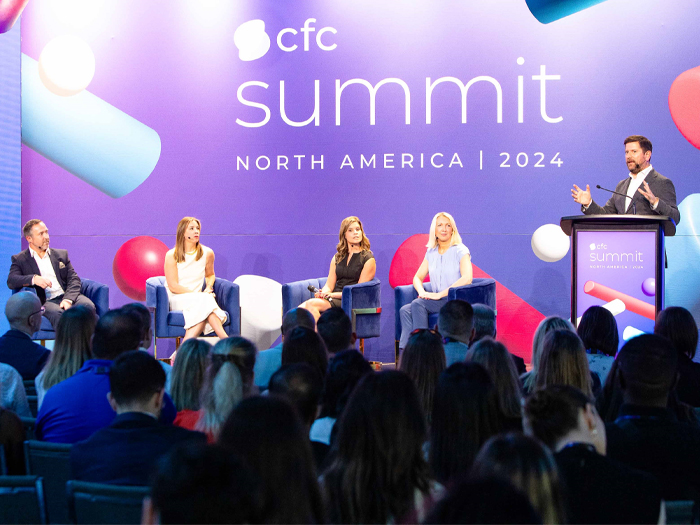
In late May, roughly 600 attendees from across the U.S. and Canada, most of them brokers, descended on Toronto’s Evergreen Brick Works for CFC’s 2024 North American Summit.
It marked the first of CFC’s North American summits to be held outside the U.S. — a move timed to coincide with the opening of CFC’s Toronto office and the first day of CFC Canada’s new leadership.
The choice of Toronto as 2024’s host city also signaled the UK-based specialty insurance provider’s intention to double down on its already strong presence in Canada.
The summit was filled with speakers looking to the latest insurance tools and techniques, from carbon swap covers to cutting-edge cyber response, and hinted at CFC’s vision of the emerging specialty insurance landscape. (One-on-one interviews with many of the summit’s speakers will appear in Risk & Insurance in the weeks to come.)
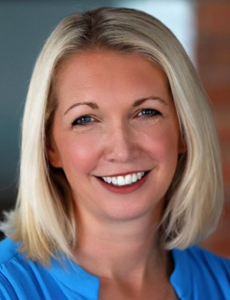
Louise O’Shea, Group CEO, CFC
Following opening remarks from CFC distribution director Pat Brice, CFC group CEO Louise O’Shea took to the stage to outline the company’s strategy for growth, including a continued focus on its people, culture and customer-centered technology.
“Our current focus is on sustained rapid growth … and how are we going to do that? We’re going to grow deeper into the markets that we’re already in, we’re going to enter new markets, and we’re going to launch new products,” O’Shea said.
“We’re planning significant growth in the U.S., as well as here in Canada with the opening of our [new] office,” she added.
O’Shea was followed by CFC’s CEO, Andy Holmes, who shared humorous anecdotes about dating — and specifically, the reaction he received after telling dates he worked in insurance — as a way to contextualize the difficulty the insurance industry faces in attracting new talent.
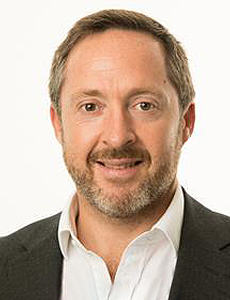
Andy Holmes, CEO, CFC
The industry’s image problem (both on the dating scene and in building out the talent pipeline) can be addressed by focusing on what makes it interesting, rewarding and meaningful: its opportunities to travel and meet people, to work at the cutting edge of technology, and to help clients reach their goals, especially as “the promise to pay is replaced with a promise to protect, where the role of the insurer is to prevent claims rather than pay claims.”
He also surprised many in attendance by voicing his support for a drastic reduction in the use of exclusions, at least in the small to medium-sized enterprise space: “Think about all the money that insurers spend every year fighting their customers in coverage disputes. It erodes any last drop of goodwill there might be between the insurer and customer. My view is that we would spend way less money paying the additional claims because we didn’t have exclusions than we do paying lawyers for coverage disputes. And I know who I prefer to pay.”
During a fireside chat, Shannon Groeber, CEO of CFC USA, introduced Kate Della Mora, the new CEO of CFC Canada — then mere hours into her new position. The talk served to introduce Della Mora to the brokers in attendance as she described her time at Marsh, her passion for the industry, and her vision for CFC’s role in Canada.

Kate Della Mora, CEO, CFC Canada

Shannon Groeber, CEO, CFC USA
“As we broaden our Canadian team, we will probably look to enhance the claims experience,” Della Mora said. “Doing what we already do well, but as we know … when that claim happens, there has to be an instant response. There has to be, from the perspective of holiday schedules or time zone differences. So it’s going to be more of that instantaneous response, but still working with our global experts.”
The summit’s afternoon session began with a presentation by George Beattie, head of innovation at CFC, who opened with a devastating portrayal of the changes that lie in store if climate change is not addressed in time.
Future success in the push to decarbonize will depend on the strength of the voluntary carbon offset market, Beattie said, making the need for a transparent and reliable way to purchase carbon offsets more crucial than ever. With that in mind, CFC is introducing covers for carbon credit delivery.

George Beattie, head of innovation, CFC
“Carbon delivery insurance wraps the forward purchase of carbon credits and indemnifies the policyholder for non-receipt of their credits,” Beattie explained. “It does it in a very simple way. We take the number of credits you did not receive but were promised, and we multiply that by the unit price you paid up front. Really simple to understand. When we talk to this market, they don’t need an elevator pitch — they get it. This is a market that is clamoring for insurance to get involved. The call signal from the market is explicit.”
The eventual result of this (besides greater confidence on the part of companies looking to purchase carbon offsets) could become a bifurcated market in which carbon credits are deemed “high-quality and insurable versus low-quality and non-insurable. Just like when you contemplate buying a car, if you look at a car and you can’t buy insurance on it, you take a second guess. The same kind of effect will take place in the carbon market. Insurance will become the standard for engaging on a forward [carbon credit purchase].”
Jason Hart, CFC’s head of Proactive Cyber, was the next to speak. Historically, cyber has been a strength of CFC’s, and Hart’s presentation demonstrated how Proactive constantly monitors cyber risk and communicates with its insureds to keep them safe from bad actors.
“Number one … in real time, we are identifying every single piece of technology that is connected to the Internet that has a relationship with the insured,” Hart said. “Number two, in real time, identifying risks that could affect that technology. Number three, identifying risks that could affect that organization. And then, finally, informing the insured that an event is going to occur — in most cases, before it even happens.”
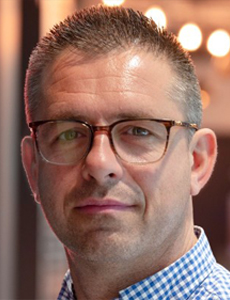
Jason Hart, head of Proactive Cyber, CFC
He continued, “What if I can tell you that we can detect if ransomware has been deployed within an organization and is yet to be activated? We do that. What if I can tell you that we can detect if an organization is prone to a phishing attack where the threat actor has been able to compromise the username and password, but has yet to use it? That’s what we’re doing in real time.”
Hart also explained how CFC is able to begin the quoting process for this service using nothing but a web domain.
Following a keynote by Chris Hadfield, a Canadian astronaut and the former commander of the ISS, CFC chief underwriting officer Dan Trueman spoke to the insurer’s need to meet brokers and insureds where they live, following the sweeping social and technological change the way people purchase and use insurance. He emphasized the idea of insurance a service — not something clients think about only when it’s up for renewal or they need to make a claim, but a year-round partner in helping to identify and mitigate risk.

Dan Trueman, chief underwriting officer, CFC
“Our insureds must be feeling the benefit of that product, that policy every day, and we must know the availability and the protection that’s behind it every single day,” Trueman said.
“It’s impossible to ignore that the world is changing,” Trueman said. “As we look at these things, it is all-important to identify the trends we’re likely to see, and what those mean for us as an industry in the process. What we really try to look at is what we call megatrends, those things that are the key shifts in the way the world is likely to have to react or act over the next 25 years. While it’s challenging to pinpoint a lot of specific trends, there are certainties. There are some key elements that I think we’re likely to see that will shape the next quarter-century.”

Lindsey Nelson, cyber development leader, CFC
He cited the growth of AI, demographic changes and the push for more sustainable practices in manufacturing, agriculture and other sectors as trends that will drive long-term changes in the industry while acknowledging the challenges inherent in selling intangibles.
The last speaker to take the stage before the concluding panel discussion was Lindsey Nelson, CFC’s cyber development leader. Her focus was on the vast swath of business not currently purchasing cyber coverage, how to approach that untapped market, and the potential scope of the missed opportunity if the industry doesn’t effectively reach small and midsize enterprises.
“We’re seeing this narrative globally, in every single country we operate in, but certainly in Canada and the U.S. It’s the same piece of business that’s moving around. That 10% number [the proportion of businesses currently purchasing cyber insurance] is the only focus for a lot of our brokers, and certainly for a lot of insurers. So we keep moving around continuously for cheaper pricing. Nobody’s focusing on the other 90%.”
She advised addressing clients’ concerns about the complexity of cyber insurance (noting that it doesn’t have to be complex) and raising cyber insurance earlier in client meetings, rather than leaving it to the end of the discussion.
“It’s something you can’t see, unlike tangible perils, but it is not difficult. It is simply coverage for your intangible assets, she said. “Cyber is one of the most short-tail products in the market. You can actually see losses incredibly quickly, which allows the performance teams to model them incredibly well.” It’s incumbent on brokers to be able to explain the value of cyber insurance in a way that clients can understand.
“If it’s a client’s biggest exposure, lead with cyber in the first part of the meeting so you’re not saving it until the very end,” she added. “Explain that it is the most important part, so it has to lead that discussion.” &








